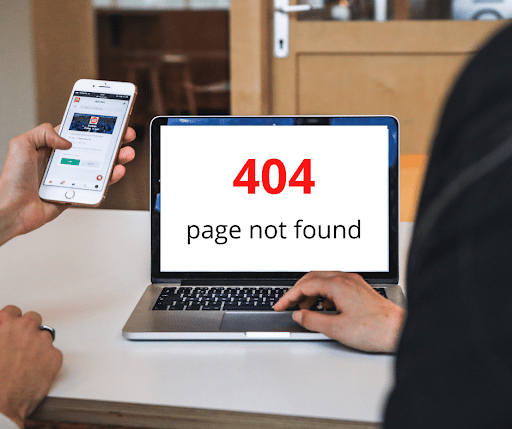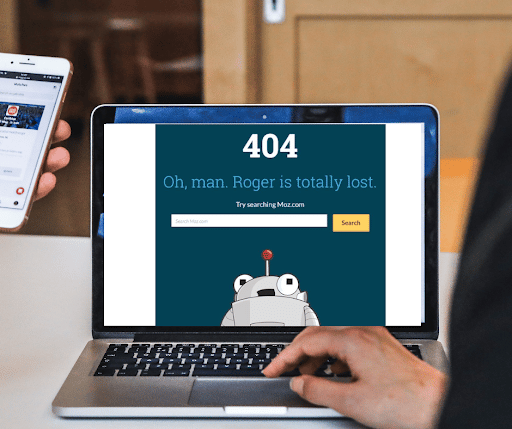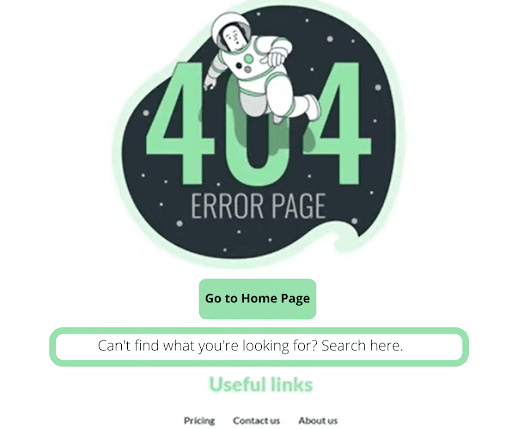“Oh no! The content you are trying to access is not available!”
Has this happened to you while searching for a certain URL?
You are trying to research an article relevant to your work, but to no avail, it no longer exists, and you don’t know what to do because that’s one of the two references given to you. Stress!!!
When you reach a site and a 404 error page appears, it could mean four things:
- The page you are accessing is moved to another page.
- The page was removed.
- The page is not available.
- You typed the wrong URL.
Whatever the reason, a 404 error page will drive a target audience away from your site.
Being directed on an error page is such a rough patch to go through, significantly if it doesn’t help you navigate where the actual website is or if you’re eager to know what’s on the site you are supposed to go. That’s the reason why custom error page exist, to alleviate the feeling of discomfort and inconvenience. Here are the benefits of why you need to customize the 404 error page:
Gives Visitors Assurance
A custom 404 error page can reassure visitors that it is not their problem to fix. Also, a suitable error page will have a search box and will also offer links that will enable you to solve the problem.
Consistent Branding
If you have a customized error page, you can make it consistent with your branding compared to just using the generic one. Of course, it wasn’t your fault that you have an error page, but at least the visitor will appreciate it if your site’s error page is customized.
See the difference?


Eliminates Bounce Rate
Another advantage of having a customized error page is that even if visitors see an error page, they will not leave the site since alternative actions are available. Thus, they will stay on the site, which is a possible conversation, rather than closing the page or going back to the search engine.
Visitors Can Pass It On
When you customize, you can make your error page catchy and exciting. It makes you memorable to visitors so they will share your error page. How? Nothing beats humor, so adding it to your error page can work wonders. It’s free advertising! Who knows, your error page can trend on social media a few days after creating it.
How to Start Creating a Custom 404 Page
1. Design and customize your page
It is where your creativity will kick in. Do you want it to be funny or more serious? It’s your call! As long as it is in theme with your brand together with other creative elements to make it unique, catchy, and most importantly, helpful. Consider your site visitor as if they are already your customer. Do you want to shoo them away?
Not all custom 404 error pages are the same. A good error page should have the following features:
- A straightforward statement that the page they’re trying to access isn’t available
- A note to help users correct a viable mistake in the URL
- There must be navigation for the main header and footer
- Suggested links to an essential section of the site
- A search bar for the site’s internal function
It is our responsibility to make the user understand that even if the site is unavailable at the moment and they cannot access the contents, other options exist on the custom error page. So they don’t have to go to a competitor’s website.

2. Configure the server to redirect the user to the custom error page
Content management systems available in the market already have a generic 404 error page in them. But this is not always the case. If your system doesn’t have an error page, then you need to ask help from your web developer to configure the server.
3. Check and evaluate the configuration.
Of course, it is best to test and double-check the configuration. Here are some guidelines:
- Recover error page HTTP response code
- Provide a descriptive title tag on the error page
- Place web analytics on the 404 page
- Avoid redirecting to another error URL page
- Do not redirect to the homepage
- Avoid using meta refresh tag redirect on your error page
4. Monitor 404 error page sessions in Google Analytics
Even if you want to eliminate users landing on error pages, it’s expected that you still want to monitor the traffic if they do land in it. Why? Because we want to determine if we implemented having a custom 404 error page correctly.
Final Point
The more web pages you have and the length of your content, the more chances to have a 404 error page. If you’re regularly editing content, adding new pages or adding new posts, you’re bound to run into these 404 errors on your website! The developer doesn’t intend to create it, nor is the business owner. It is a manifestation that the internet world changes without us knowing it. So, be proactive by creating a custom 404 error page, it’s better to include it in your plan (and on your budget).
Our goal is for our users to have a smooth experience navigating our site, rather than bouncing! Why wait when you can start doing it!


